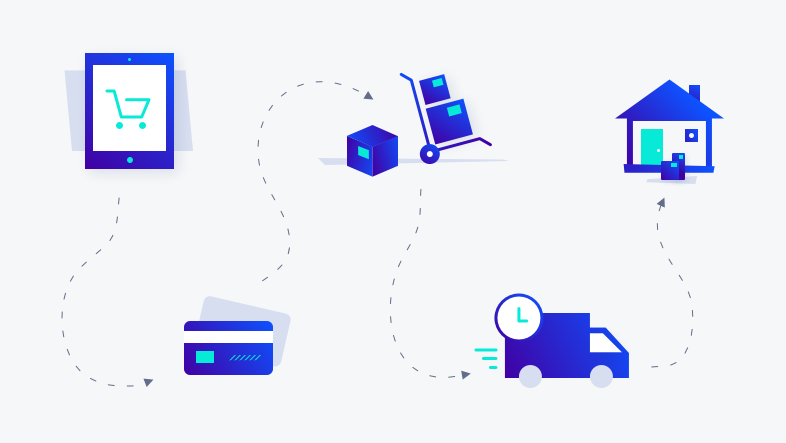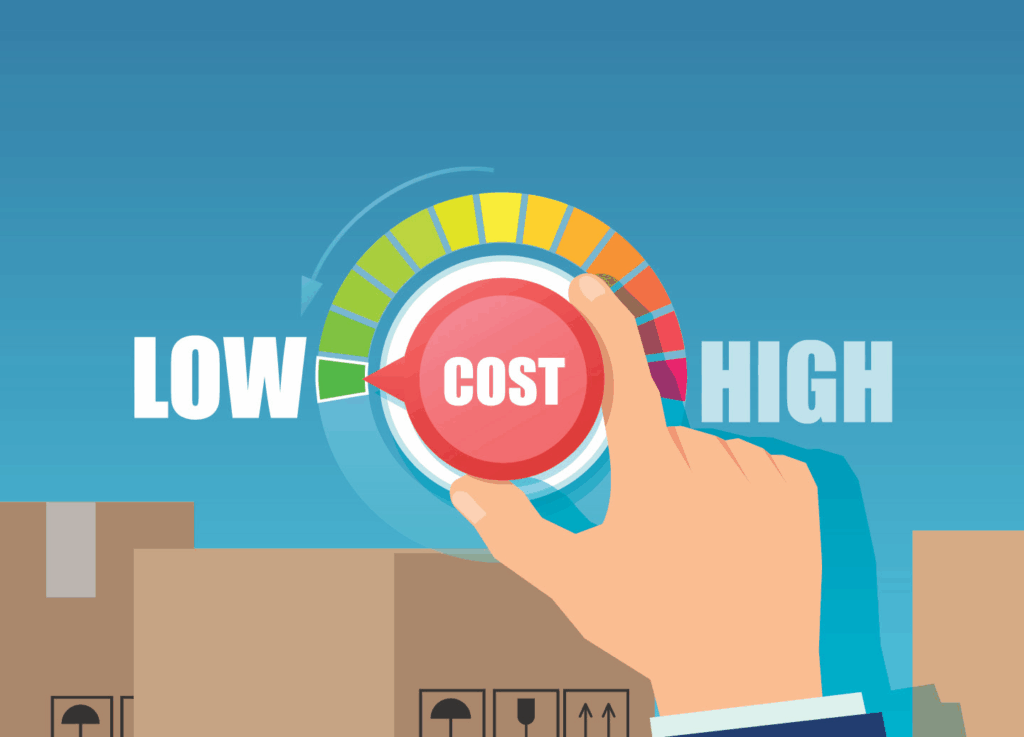电子商务航运整合震撼:提升销售额的 7 个秘诀
送货是一种无声的力量,它可以决定一家网店的成败。如果送货速度慢、成本高或杂乱无章,再好的产品和再强的营销手段也无济于事。事实很清楚: 电子商务发货集成 不再仅仅是后端任务,而是削减成本、加快交付和推动销售的引擎。节省的每一美元都能转化为利润,提高的每一个效率都能打开增长空间。通过正确的整合,商店可以更快地扩大规模,建立信任,并领先于竞争对手。
以下是 电子商务航运整合的 7 大秘诀 揭示了更智能的航运如何直接推动收入增长。

1 通过自动化削减运营成本
1.1 无需手动输入数据
如果没有集成,工作人员必须手工将订单详细信息输入承运商门户。这既费时,又增加了人力成本。集成系统可实现流程自动化,每天节省数小时。
1.2 错误更少,收益更低
地址或重量估算中的错误往往会导致送货失败和昂贵的退货。通过电子商务发货集成,订单数据可直接流向承运商,从而减少代价高昂的错误。
2 取消批量发货折扣
2.1 接入运营商费率协议
承运商通常会为发货量大的企业提供更低的费率。即使装运量不大,电子商务装运整合平台也能让商店享受到这些折扣。

2.2 合并多个通道
许多企业通过 Shopify 进行销售、 WooCommerce或亚马逊。整合功能可将不同平台的订单整合到一个系统中,从而增加总发货量并获得更优惠的折扣。
3 实时比较费率
3.1 智能费率购物
不同的承运商根据重量、速度和目的地收取不同的费率。电子商务航运集成可进行即时比较。企业通常可以节省 每个订单 10-20% 通过选择最佳的运营商方案。
3.2 成本控制的动态规则
商店可以创建规则,如 "轻型包裹使用承运商 A "或 "隔夜运输选择承运商 B"。这些规则可自动控制成本,确保持续节约。
4 节省人力和处理时间
4.1 简化履约流程
手动发货需要在电子表格、电子商务平台和承运商网站之间切换。集成功能可将所有任务整合到一个控制面板中。工作人员可以生成标签、发票和 追踪号码 以秒为单位。

4.2 不增加工作人员的比额表
随着订单的增加,人工操作通常需要更多员工。电子商务发货集成可自动扩展,使企业无需增加员工即可处理更高的订单量。
5 优化包装,减少浪费
5.1 自动化包装建议
过大的包装会导致更高的运输成本和材料浪费。集成系统可分析产品尺寸,并为每个订单推荐最佳包装。
5.2 重量减轻等于成本降低
减少不必要的填充物或过大的包装箱可减轻运输重量。即使是很小的减少,如每个包装减少 100 克,每年也能节省大量费用。
6 利用数据完善运输策略
6.1 运营商绩效分析
集成系统监控器 交货速度、可靠性和成本。这有助于企业发现薄弱的运营商,并将业务量转移到那些提供更快服务和更优惠费率的运营商。
6.2 确定高成本区
报告会突出显示运费一直居高不下的地区。商店可以通过调整价格、增加提货选项或设置免运费的订单阈值来应对。

6.3 季节性规划
航运数据显示了节假日和高峰期的明显模式。通过提前规划,企业可以谈判到更优惠的价格,并准备好库存,避免在最后一刻交付昂贵的货物。
7 通过更好的客户体验促进销售
7.1 以较低成本加快交付
整合节省下来的成本可以再投资,用于提供免费或折扣的送货服务。由于高昂的运费是购物车被放弃的主要原因,因此较低的成本可转化为更多的完成购买。
7.2 透明度建立信任
即时跟踪更新和可靠的送货提高了客户的信心。享受顺畅送货体验的买家更有可能再次订购并向他人推荐商店,从而创造长期增长。
集成如何降低管理成本?
- 降低订阅成本.通过集中 电子商务通过将订单管理、发货和客户服务整合到一个平台中,企业可以减少多个工具的订阅费用。这也简化了日常运营,因为团队不再需要在不同的系统间切换来进行订单管理、物流和客户查询。

- 减少 IT 维护.由于需要更新、补丁或技术支持的系统减少,IT 维护成本也随之降低。这就减轻了内部 IT 团队的工作量,并最大限度地降低了因软件不兼容或平台过时而导致停机的风险。
- 为员工节省时间.员工在统一的仪表板上工作,而不是在电子表格、电子邮件和运营商网站上打转,从而节省了时间。这种效率使他们能够更快地处理订单,更有效地解决客户问题,并将更多精力投入到营销、战略和客户参与等高价值任务中。
电子商务发货整合能否改善库存规划?
是的,集成可提供与库存系统相连接的发货数据。企业可以
- 按地区预测订单需求.利用运输数据了解哪些地区产生的订单最多,并在靠近这些买家的地方备货。这样可以减少长途运输,提高履约速度。
- 减少过度储存.更智能 库存规划 防止多余库存在仓库中闲置。腾出空间可降低存储成本,使企业能够更有效地分配资金。
- 缩短送货路线.将产品放置在需求量大的地区附近可以缩短送货路线,从而降低运输费用,确保客户更快收到订单。
为什么成本效益会带来更高的销售额?
- 有竞争力的定价
较低的运营成本为企业调整产品价格提供了更大的灵活性。在不牺牲利润的情况下保持价格的吸引力,商店就能在竞争激烈的市场中赢得更有利的地位,吸引对价格敏感的顾客。 - 免费送货选择
电子商务送货整合产生的节余可再投资于免费送货计划或促销折扣。提供这些激励措施可降低购物车放弃率,鼓励购物者完成购物。

- 客户忠诚度
当买家体验到实惠和快速的送货服务时,他们就更有可能信任这家商店,再次光顾并向他人推荐。随着时间的推移,这种积极体验的循环会建立起更牢固的客户关系和长期增长。
结论
电子商务运输集成可降低成本、提高效率并直接支持销售增长。通过减少人工操作、释放承运商折扣、比较费率、优化包装和应用数据洞察力,企业实现了有意义的节约。降低管理费用、更智能的库存规划和成本驱动型销售策略等附加优势将进一步推动业务增长。
其结果是利润更丰厚、执行更迅速、客户更满意。 电子商务发货集成 这不仅关系到物流,也是一项能够建立长期收入和忠诚度的战略。
行业洞察
收件箱消息
Nulla turp dis cursus.整体释放,预留空间








